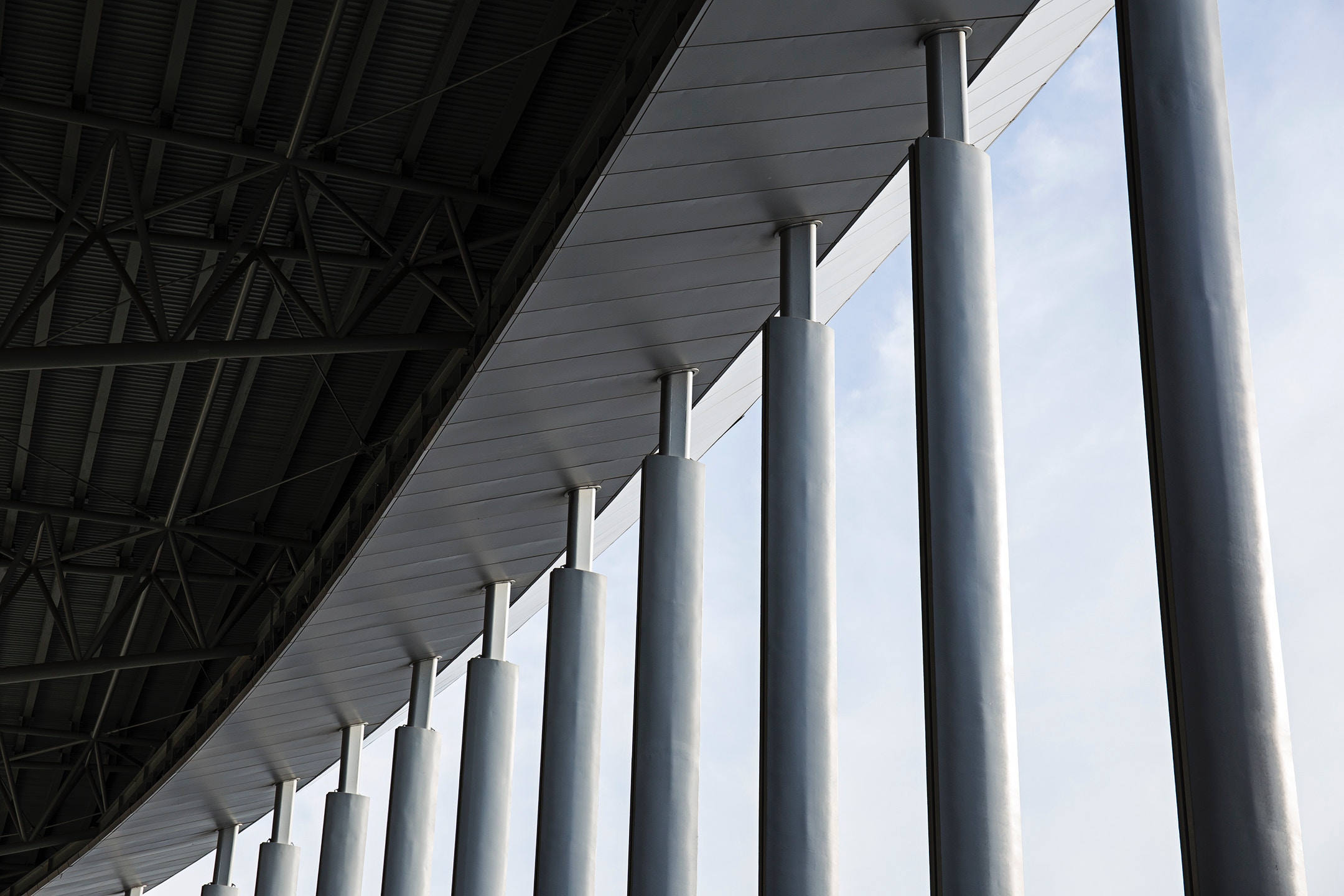Contents
- What is Inbound Marketing for B2B SaaS?
- Inbound Marketing vs Outbound Marketing
- Why do you need an Inbound Saas Marketing strategy?
- How do you implement inbound marketing for SaaS?
- 6 Best Inbound Marketing Practices for a SaaS Business:
- How Can an Inbound SaaS Marketing Agency Help Your Business Grow?
- Conclusion
How do you get potential customers to find your SaaS product? Do you push your product in front of them or attract them when they're ready to decide? This is the key question behind inbound marketing for SaaS businesses.
When customers feel like they’ve chosen to engage with your product on their own, it builds trust and makes their journey more meaningful. For SaaS businesses, this approach is essential to attracting and retaining users.
This blog will discuss the foundational aspects of inbound marketing, which is designed only for SaaS marketing in a startup. We will focus on the best practices and innovative strategies to help you attract leads, build relationships, and grow your business in a competitive market.
What is Inbound Marketing for B2B SaaS?
Inbound Marketing for SaaS customizes the core principles of inbound marketing to meet the diverse needs of the Software as a Service (SaaS) sector. Inbound marketing outperforms traditional marketing by generating three times more leads per dollar.
Unlike traditional strategies focusing only on conversions, Inbound Marketing for SaaS goes beyond, focusing on customer retention, feature upselling, and the strategic use of consumer data to fuel business growth. Insights from lead generation statistics show that 68% of marketers have confidence in the effectiveness of the inbound approach.
This approach is based more on the buyer journey, unfolding in three key stages:
Awareness: At the top of the funnel, the focus is building awareness around the problem and how your SaaS product provides the solution. Content created in this highlights pain points and strategically positions your SaaS product as the definitive answer.
Consideration: As we move down the saas marketing funnel, the consideration stage involves content focusing on your SaaS product's unique selling propositions (USPs) and capabilities and standing against the competition. The goal is to guide potential customers toward a deeper understanding of your SaaS product's unique value.
Decision: The final stage is about converting potential customers into clients. This is achieved through content showcasing flexible pricing, customer testimonials, and personalized product demonstrations. The objective is to instill confidence in decision-making and encourage informed choices.
Inbound Marketing vs Outbound Marketing
A Successful marketing strategy involves a delicate balance between inbound and outbound methodologies. Both exhibit distinctive approaches that are crucial in shaping the customer experience. These approaches provide insights into their influence in SaaS Marketing and focus on the best practices essential in inbound marketing. Let’s compare inbound and outbound marketing:
1. Approach
-
SaaS Inbound Marketing: It smoothly approaches and attracts potential customers by offering engaging content and building a genuine connection. Simply, it radiates charm and charisma, resembling a captivating storyteller.
-
Outbound Marketing: It takes an interruption-based approach, following persistent door-to-door salespersons. It casts a wide net to reach a broad audience through promotional and sales-oriented tactics.
2. Audience
-
SaaS Inbound Marketing: Draws and engages potential customers organically, tailoring content to individuals genuinely interested in the product or service.
-
Outbound Marketing: Takes a broad approach, targeting a wide audience without necessarily ensuring pre-existing interest, relying on volume for potential results.
3. Content
-
SaaS Inbound Marketing: Delivers informative, valuable content designed to meet customer needs, focusing on building trust through personalized engagement.
-
Outbound Marketing: Leans toward promotional, sales-oriented content, often generic, with an immediate conversion goal in mind.
4. Timing
-
SaaS Inbound Marketing: Connects with customers throughout their buyer's journey, aligning with their pace and preferences.
-
Outbound Marketing: Disrupts customers' routines, potentially reaching them at inconvenient times, which works like a potential resistance element.
5. Relationship
-
SaaS Inbound Marketing: Prioritizes relationship-building over transactional interactions, fostering trust and long-term customer loyalty.
-
Outbound Marketing: Focuses on transactional engagements, emphasizing immediate conversions and quantity over the depth of the relationship.
The effectiveness of inbound marketing in enhancing the lead conversion rate surpasses that of outbound marketing by a factor of 10. Inbound marketing is about telling captivating stories, keeping customers engaged throughout their buying journey, and building lasting relationships. The secret ingredients for long-term success are delivering valuable content and making genuine connections. Remember, for SaaS, it's not just about making a sale; it's about the journey and the relationships formed along the way.
Why do you need an Inbound Saas Marketing strategy?
Before we talk about inbound marketing practice, it’s crucial to figure out why your business needs a strategy and why it is important to have one. Here are the key reasons why having an inbound marketing strategy is not a choice but a necessity:
Authentic Connection Building:
Inbound marketing builds authentic connections by creating content that resonates with your audience. This approach establishes genuine rapport, fostering long-term relationships beyond just transactions.
Customer-Centric Approach:
Inbound marketing revolves around understanding and prioritizing your customers. This approach helps SaaS consultants create personalized and meaningful interactions by pinning and addressing the customer’s needs, ultimately fostering brand loyalty.
Cost-Effective and Sustainable Results:
Unlike traditional outbound methods with high upfront costs, inbound marketing offers a cost-effective and sustainable approach, which is particularly advantageous for SaaS examples looking to maximize ROI. While requiring an initial investment, the results compound over time, generating organic growth and reducing reliance on expensive outbound tactics.
Scale Smarter with Targeted SaaS Inbound Strategies
Drive sustainable growth with inbound marketing built for B2B SaaS companies. Generate qualified leads, reduce churn, and boost revenue with Saffron Edge.
How do you implement inbound marketing for SaaS?
Executing SaaS inbound marketing involves a structured three-step process:
-
Content Creation
-
Content Promotion
-
Content optimization
Each step involves further breakdown of their own, increasing the effectiveness of inbound marketing.
1. Content Creation
User Research
Build detailed user personas based on roles, tasks, needs, pain points, missions, values, and past experiences. Once you have your user details, you can shape content marketing for SaaS to align with them—considering topics, formats, language, distribution channels, and word length.
Keyword Research
Next, it's time for keyword research. This is your secret weapon to ensure your content pops up in searches and gets clicked, especially if you're writing blogs or creating landing pages. Don't worry if it sounds complex; we have resources to guide you through SaaS Branding, SaaS SEO, keyword research, and making your content stand out.
Competitor Research
Return to basics with competitor research using a good old SWOT analysis for marketing analysis. Look at what your competitors are doing right regarding SaaS templates and where they're slipping. Find opportunities to outshine them and potential threats to watch out for.
To get a complete picture, focus on content topics, formats, third-party reviews, social media presence, sales funnels, nurture journeys, chatbots, keywords, and channel trends.
Channel Trend Research
With competitors, watch emerging channels that could make your content go viral. Your competitor and user research will give you some ideas, but there might be hidden opportunities in new social media platforms, features in existing ones, or new tech adopted by many.
Think TikTok, Whatsapp for business, or voice assistants like Alexa – these game-changers can redefine how companies reach customers.
Medium Research
Find out what content type your potential users prefer. This depends on their demographics, which you figured out in the user research phase. It's a game-changer that will guide what kind of content you create and might even shake up your whole marketing team structure.
Audio content could be the way to go if you're targeting on-the-go non-desk employees.
Content Development
Once all your research is completed, it’s time for execution. Your research does the most important work, giving you a crystal-clear strategy for every aspect of content creation. If you're working with a team, ensure they can easily read and understand your research.
Present it in bite-sized pieces, like a Sushi buffet, so everyone can agree and work toward your goal.
2. Content Promotion
Once your content research is done, you'll know where your content can be engaged. Instead of discussing the advantages of these promotion channels, let's explore ways to maximize your content reach through them. These tactics will help your content promotion strategy and expand your audience reach.
SEO
SEO takes the lead in content promotion efforts. Most marketers have biases toward seo; here are a few valuable insights you need to implement:
Firstly, don’t ignore link-building; it’s a key factor. Secondly, focus on building out topics and content hubs rather than only focusing on keywords. For example, see how Maze goes the extra mile in creating guides and collections for the user.
Social Media
Social media is the best B2B content distribution strategy. Use the demographic data from each platform wisely, customizing your social copy and post types to connect with your audience. To enhance reach, implement a social promotion strategy with your internal team. This is particularly effective for smaller SaaS businesses and startups.
Email Marketing
Hyper-segmentation is the key to a successful email marketing campaign. Avoid sending generic newsletters to a vast list; instead, segment your audience based on their jobs, roles, locations, and involvement with your brand. Update content delivery frequency to suit their preferences.
Referral Marketing
What are your most significant ambassadors? Your current users, especially those who score seven and up in your NPS survey. Engage them by creating unique, shareable content, like email templates or text snippets, for easy referral. Enable effortless share options for word-of-mouth marketing.
Influencers:
Influencers play a crucial role. Identify influencers within your niche by searching keywords or hashtags. Remember the dos and don'ts:
-
Build a relationship with influencers, offering transparency and trust.
-
Clearly outline expectations in writing.
-
Never offer free trials or devalue their work; respect their effort and pay accordingly.
Events
Both online and offline events offer prime opportunities for digital marketing content. Build events around your target customer's Jobs-to-Be-Done, ensuring insights and collaboration with relevant brands with a relevant b2b saas marketing strategy.
Partnerships
Partnerships come in various forms, from newsletter swaps to joint events and product integrations. Identify businesses that align with your customer base and explore innovative ways to collaborate for mutual market penetration.
3. Content Optimization
Content optimization is the final part of an inbound marketing journey. Even if your content is exceptional, there's always room for refinement. This last step is the key to continually attracting more leads and designing the sales process by minimizing churn rates.
KPIs
Look out for the Key Performance Indicators (KPIs) that signify you're aligning with your monthly, quarterly, and yearly goals. These KPIs, measured against historical data, should challenge your content strategy without setting unattainable objectives.
Inbound content-specific KPIs to consider:
-
Primary: MQLs or product activations, New MRR/Pipeline generated, Newsletter signups, Impressions, Social media growth, and Brand searches.
-
Secondary: Qualified lead generation or signups, Click-Through Rate (CTR), Newsletter signups, Time on page, Exit rate, New visits, Visits by source, Blog subscribers & views, Inbound links, Email opens and click-throughs, Keyword rankings, SaaS SEO KPIs.
Red Flags
Optimizing content is about spotting potential issues. Implement tools and processes to alert you if content falls short. Whether due to technical glitches affecting content delivery or a mismatch with the intended audience, various SaaS tools can signal red flags, and we'll introduce some shortly.
NPS & Polls:
If you get uncertain about your brand and content perception, turn to your audience for valuable insights. Net Promoter Score (NPS) surveys are the perfect resource to measure how your brand is perceived and assess if you're achieving your desired results. For a deeper understanding, conduct surveys among your subscribers. Ask them about their preferences, what resonates with them, what doesn't, and what additional content they're eager for.
6 Best Inbound Marketing Practices for a SaaS Business:
1. Diversify Value Beyond Product Purchase:
Every Customer interaction is not supposed to result in a product sale. Instead, focus on converting visitors into leads.
Offer additional value through resources like ebooks, guides, and free discovery calls, changing your approach based on the lead's level of interest.
2. Engage Current Users for Insights:
Interview existing clients to identify missing features.
Highlight these features in your content to bridge the gap between what users seek and what your product provides.
This approach is more user-centric, enhancing content credibility and addressing potential customers' needs.
3. Enable User Segmentation:
Proper segmentation helps you deliver more relevant content to users. By asking users about their interests, you can better target your messaging.
-
Ask users to share preferences through surveys or sign-up forms.
-
Organize users based on their responses to create content that matches their specific needs.
-
Send personalized email campaigns that align with each segment’s interests.
-
Track engagement to see which segments respond best and adjust your strategy accordingly.
-
Use segmentation to improve customer retention by offering content and updates that feel more relevant to each user.
4. Share Expertise:
Answering prospective customers' questions directly is a powerful content strategy. Share your expertise openly, positioning your SaaS branding as the convenient, best solution to their needs.
-
Identify common questions from your target audience and create content that directly addresses them.
-
Use simple blog posts, videos, or even live webinars to provide helpful answers people are looking for.
-
Ensure your content is easy to find by optimizing it for search engines with relevant keywords.
-
Share what you know, offer real value, and help people solve problems, not just pitch your product.
-
Highlight real-life examples like customer success stories to show how your product makes a difference.
5. Align Content with Search Intent:
The key to successful inbound marketing is to create and optimize SEO that gives people what they're after and understands their search intent.
It's all about figuring out the genuine purpose behind someone's Google search to create content that truly satisfies their needs.
Whether through how-to articles, product lists, or other formats, align your content with prevalent search queries.
Google is an expert at reading user intent, and the top-ranking results shed light on what people are primarily looking for in a particular query.
6. Continuous Optimization and Definition:
Use both data and feedback to improve your content strategy. Tools like SEMrush, Google Search Console, Google Trends, and Google Analytics can help you track performance and make necessary adjustments.
-
Track what content is driving the most traffic using tools like Google Analytics.
-
Identify areas where visitors drop off or engage less to improve user experience.
-
Optimize your content strategy based on performance data and user behavior.
-
Monitor competitors to stay updated on trends and find opportunities to improve.
-
Use customer feedback to refine your content and address their needs more effectively.
How Can an Inbound SaaS Marketing Agency Help Your Business Grow?
If you're struggling to scale your startup or grow your established business, an inbound SaaS marketing agency can help. Saffron Edge is one of the leading agencies specializing in data-driven strategies focused on user acquisition, activation, and retention.
We use proven techniques like A/B testing, SEO, conversion rate optimization, and content strategies to improve your marketing funnel. Our team works with you to understand your challenges, identify opportunities, and develop a clear, practical plan to drive growth.
Partner with Saffron Edge, a trusted B2B SaaS marketing agency, to implement strategies that deliver real, measurable results.
Conclusion
In digital marketing for SaaS, inbound marketing helps you cultivate a distinctive identity, setting you apart from competitors. It also establishes recognition and confidence in your product. The true value of content lies in building real connections with users, even before they become subscribers. Inbound marketing convinces users that your SaaS is the optimal solution for their needs; they are more likely to act by signing up, sharing your content, or expressing interest in the product.
If you want to get ahead with Inbound marketing, You can get help from an SEO agency for SaaS, like Saffron Edge, a top-tier marketing agency. Our experts will blend into your team, giving you the best result and making you stand out in the competitive market. Plus, we equip your team with the latest SaaS marketing tools to meet your business goals.
Turn Visitors into Customers with Inbound Marketing
Attract, engage, and convert high-value B2B leads with data-driven inbound strategies tailored for SaaS growth.
Get The SaaS Marketing Toolkit
Frequently Asked Questions
What is B2B SaaS inbound marketing, and how can we help?
B2B SaaS inbound marketing attracts and converts customers through valuable content, SEO, and automation. We specialize in creating data-driven strategies to help you generate and nurture high-quality leads.
How does our inbound marketing approach benefit SaaS companies?
Our strategies help SaaS businesses like yours build trust, lower acquisition costs, and drive long-term growth by focusing on organic traffic and lead nurturing.
What are the key components of our B2B SaaS inbound strategy?
We focus on content marketing, SEO, email automation, social media engagement, and lead nurturing to guide prospects through your sales funnel effectively.
How long does it take us to see results from inbound marketing?
While results vary, most SaaS companies working with us see noticeable improvements in organic traffic, engagement, and conversions within 3-6 months.
What makes our inbound marketing different from outbound marketing?
Unlike outbound marketing, which relies on direct outreach like cold emails and ads, we use inbound marketing to attract customers organically through valuable content and strategic engagement.
How can we get started with B2B SaaS inbound marketing?
Let’s start by defining your ideal customer profile, creating high-value content, optimizing for SEO, and leveraging automation to nurture leads effectively. Contact us to kickstart your growth!
Related Blogs
We explore and publish the latest & most underrated content before it becomes a trend.
7 min read
How to Use HubSpot Data Quality Automation to Improve CRM Insights?
By Sabah Noor
Subscribe to Saffron Edge Newsletter!

Get The SaaS Marketing Toolkit










